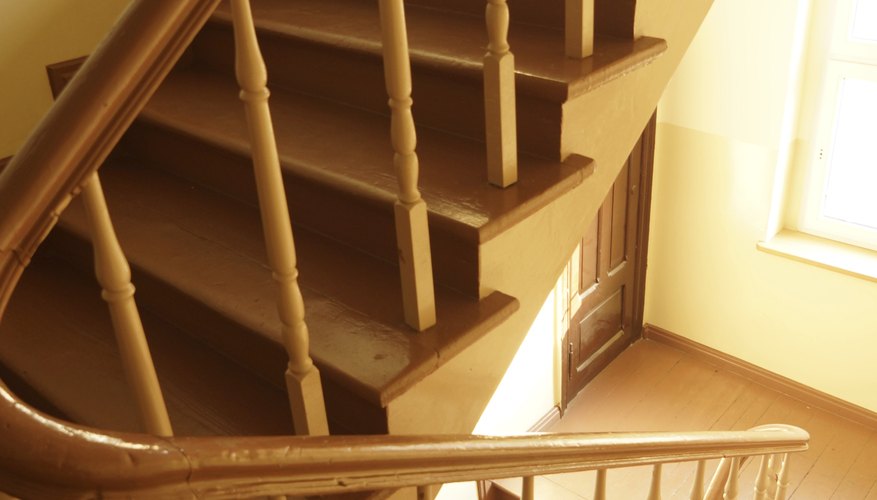Using cork flooring is an environmentally friendly way to finish the floors in your home. Cork is made from the bark of the oak tree. Harvesting the bark to make cork does not affect the tree in any negative way, and the bark quickly regenerates. This makes cork a green alternative to traditional hardwood floors, which deplete trees that may take decades to regrow. Cork floors are also soft and comfortable to walk on yet durable and low maintenance. This material can be installed throughout the house and can even be used on stairs instead of carpet or hardwoods.
- Using cork flooring is an environmentally friendly way to finish the floors in your home.
Measure the height, width, and depth of each stair to determine how much material you will need to purchase. Cork flooring is available is both floating and glue-down models. When installing on stairs, choose a glue-down model for stability and easier installation.
Choose a stair nosing. This is the portion of the tread that extends out horizontally past the vertical riser. With a soft floor like cork, you'll want to use a durable nosing made from wood or metal. Some cork flooring manufacturers make complementary nosings, but if you can't find one you like, choose a metal or wood nosing from your local DIY centre.
- This is the portion of the tread that extends out horizontally past the vertical riser.
- With a soft floor like cork, you'll want to use a durable nosing made from wood or metal.
Prepare your stairs for the cork's installation. Sand down any uneven spots or joint compound splotches. Remove any stray nails or staples and tighten up any loose stairs using flooring nails and wooden shims. Finish by sweeping or vacuuming the stairs thoroughly to remove all dirt and debris.
Install your stair nosings. Start at the bottom stair and use a single piece of nosing to cover the entire front of the stair (where the riser meets the tread). Nail the nosing in place every 15 cm (6 inches), using a hammer and flooring nails. If you're using metal nosing, you will want to use any screws or fasteners that came with the nosing itself. Cut nosing using a circular saw as needed.
- Install your stair nosings.
- If you're using metal nosing, you will want to use any screws or fasteners that came with the nosing itself.
Begin installing your cork flooring. Start on the riser (vertical section) of the bottom stair. Use a trowel to apply a cork flooring adhesive to the riser in a circular motion. Lay the cork flooring on the riser and press it firmly in place. You'll have about a 15-minute window to work before the adhesive dries.
Continue laying your cork flooring sections, working your way up the stairs. Cut the planks or tiles using your circular saw as necessary to allow them to fit tightly against the stair nosing pieces.
Allow the cork flooring to dry overnight, and avoid walking on the stairs as much as possible during that time.
